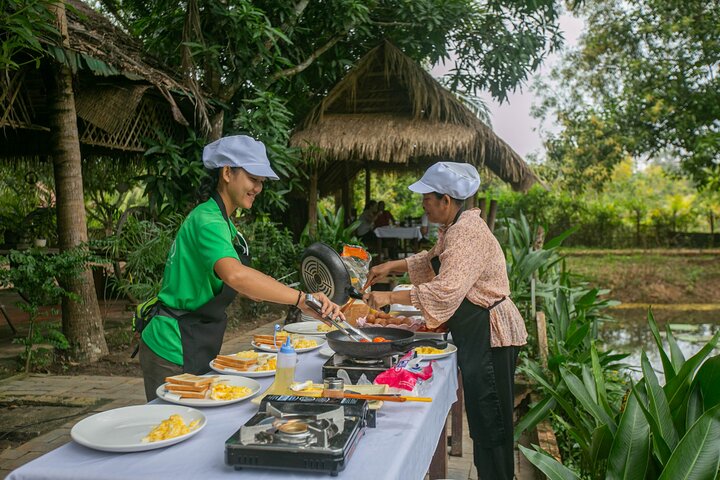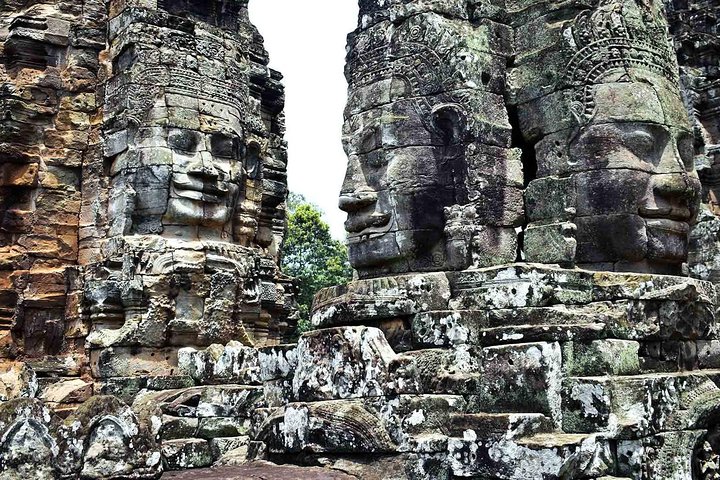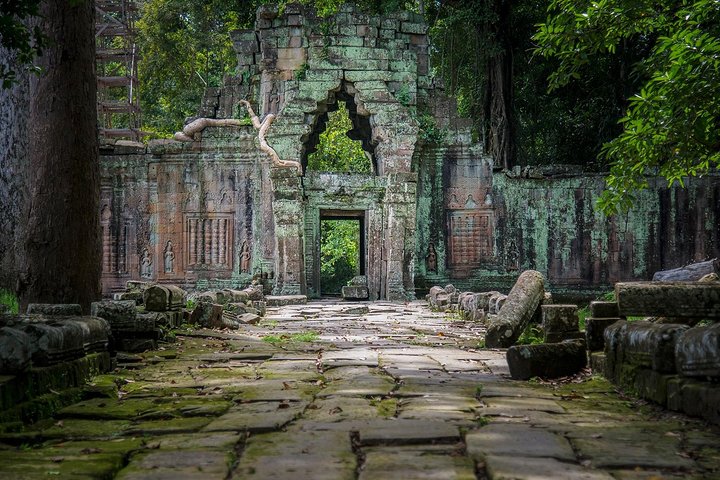Exploring the Cultural Tapestry of Krong Siem Reap: A Journey Through Time and Tradition
Embark on a journey through Krong Siem Reap, where ancient engineering marvels meet traditional craftsmanship and spiritual serenity. Discover the West Baray reservoir, the Artisan d’Angkor Silk Farm, and the tranquil Wat Knat Rongsey temple in this culturally rich experience.
Discovering the Ancient Reservoir: West Baray
As I embarked on my journey to Krong Siem Reap, I was filled with anticipation to explore the West Baray, one of the largest man-made reservoirs from the Angkorian period. The sheer scale of this 11th-century engineering marvel, spanning 8 kilometers in length and 2 kilometers in width, left me in awe. It was a testament to the ingenuity of Khmer engineering, designed to collect and store water for irrigation, supporting agriculture throughout the region.
The serene and scenic retreat offered by West Baray was a welcome escape from the hustle and bustle of modern life. As I stood by the crystal-clear waters, surrounded by lush greenery, I felt a deep connection to the past. The small island temple, West Mebon, located at the center of the reservoir, added a mystical touch to the landscape. I took a leisurely boat ride across the waters, allowing myself to be enveloped by the tranquility and history that permeated the air.
The experience was not just about witnessing a historical site; it was about understanding the vital role that this reservoir played in the lives of the people who once inhabited this land. It was a reminder of the importance of water management and sustainability, lessons that are still relevant today.
The Art of Silk Weaving: Artisan d’Angkor Silk Farm
My next stop was the Artisan d’Angkor Silk Farm, a place that beautifully encapsulates Cambodia’s enduring cultural heritage and artisanal craftsmanship. As someone who has always been fascinated by traditional crafts, I was eager to witness the intricate process of silk-making firsthand.
The farm spans acres of mulberry plantations, where silkworms are raised from larvae to cocoon. I was guided through every step of the silk production process, from mulberry leaf harvesting and silkworm cultivation to the delicate extraction of silk threads and weaving them into beautiful fabrics. Watching the artisans work on hand-operated looms, creating exquisite silk garments and accessories, was a mesmerizing experience.
The patterns they used reflected Cambodia’s rich cultural heritage, and I couldn’t resist purchasing a few handmade silk products as souvenirs. The farm not only preserves ancient silk weaving techniques but also empowers local artisans with sustainable employment, making it a perfect blend of tradition, craftsmanship, and cultural preservation.
A Spiritual Retreat: Wat Knat Rongsey
No visit to Krong Siem Reap would be complete without a visit to Wat Knat Rongsey, a serene and culturally significant Buddhist temple. Set amidst the tranquility of nature, the temple offered a peaceful retreat for both locals and visitors seeking spiritual reflection and a deeper connection to Cambodia’s religious traditions.
The temple complex was adorned with traditional Khmer architecture, featuring ornate stupas, intricate carvings, and brightly painted murals depicting Buddhist teachings and stories. As I wandered through the grounds, I observed monks and devotees engaged in daily prayers, meditation, and offerings. The atmosphere was one of reverence and serenity, a stark contrast to the bustling city life.
Wat Knat Rongsey serves as a spiritual hub for the local community, hosting religious ceremonies, festivals, and events throughout the year. Its quiet, picturesque setting made it an ideal spot for me to experience Cambodia’s spiritual heritage while enjoying the peaceful ambiance that surrounded the temple.
This journey through Krong Siem Reap was a profound experience, offering a unique blend of history, culture, and spirituality. It was a reminder of the rich tapestry of traditions that make up this beautiful region, and I left with a deeper appreciation for the cultural heritage that continues to thrive here.












































